Start Here
Homepage Bottom Form
We will get back to you as soon as possible.
Please try again later.
Insurance Coverage Review Checklist
🧾 Insurance Coverage Review Checklist (Are You Protected Enough?)
Created by House Fire Solutions – Helping Homeowners Recover, Rebuild, and Protect Their Future
After a fire, most homeowners discover too late that their insurance coverage doesn’t truly match their needs.
This checklist helps you
review every part of your policy, identify gaps, and make sure your home, belongings, and future are fully protected.
🏠 1. Homeowner Policy Basics
☐ Review your
policy type – HO-3, HO-5, or HO-8 – and understand what it covers.
☐ Verify your
policy number,
effective date, and
renewal date.
☐ Confirm your
insurance company’s contact info and
agent details.
☐ Check if you receive
annual updates from your insurer about coverage changes.
☐ Review your
deductible amount – is it affordable after a disaster?
☐ Verify whether your
coverage limits have kept up with current home value and inflation.
💡 Tip: Many homeowners are underinsured because coverage hasn’t been updated in over 5 years.
🧱 2. Dwelling (Structure) Coverage
☐ Confirm the
replacement cost value (RCV) of your home structure — not just market value.
☐ Ask if your policy includes
Guaranteed or Extended Replacement Cost Coverage.
☐ Check whether
custom features (cabinets, flooring, finishes) are included in valuation.
☐ Ensure coverage includes
attached structures like garages, decks, or porches.
☐ Review whether
building code upgrades or
permits are covered in a rebuild.
☐ Confirm that
contractor overhead and profit (O&P) are included in your rebuild payout.
☐ Check for exclusions related to
fire damage, smoke, or heat exposure.
☐ Make sure the policy covers
damage from firefighting efforts (water, foam, etc.).
💡 Tip: Ask your insurer for a rebuild cost estimate based on local construction prices, not a generic calculator.
🏡 3. Other Structures Coverage
☐ Verify coverage for
detached garages, sheds, barns, or fences.
☐ Check the
percentage of dwelling coverage applied to other structures (often 10%).
☐ Determine if solar panels, greenhouses, or outbuildings are included.
☐ Ensure coverage extends to
driveways, retaining walls, and gates.
☐ Ask if custom or historical structures require an appraisal.
💡 Tip: If you’ve added new outdoor structures, update your policy immediately.
🛋️ 4. Personal Property Coverage
☐ Review the total
personal property (contents) limit – usually 50–70% of dwelling coverage.
☐ Check if coverage is based on
Replacement Cost Value (RCV) or
Actual Cash Value (ACV).
☐ Confirm your coverage includes
furniture, electronics, clothing, and appliances.
☐ Ensure your
policy covers off-site items (e.g., items in storage or your car).
☐ Review sub-limits for
jewelry, firearms, collectibles, and art.
☐ Ask if high-value items require
separate riders or endorsements.
☐ Confirm
receipts, photos, or appraisals are accepted as proof of ownership.
☐ Check whether
smoke damage or partial loss items are covered at full replacement value.
💡 Tip: Keep a digital home inventory spreadsheet linked to receipts and photos (you already have one from House Fire Solutions).
🚗 5. Additional Living Expenses (ALE)
☐ Verify
temporary housing coverage limits (hotel, rental, food, transportation).
☐ Check how long ALE benefits last — 12, 18, or 24 months?
☐ Determine if
pet boarding, internet, and commute expenses are included.
☐ Confirm that coverage begins immediately after the fire — not after adjuster approval.
☐ Review if there’s a
daily or total limit on living expense reimbursement.
💡 Tip: After a fire, ALE is often the first benefit you’ll need — make sure it’s realistic for your family’s needs.
🧰 6. Debris Removal & Cleanup Coverage
☐ Confirm whether
debris removal after a fire is included or limited by percentage.
☐ Ask if coverage includes
hazardous material disposal (ash, asbestos, chemicals).
☐ Review maximum payout or combined limits with other coverage types.
☐ Check if additional debris removal costs can be claimed under dwelling coverage.
💡 Tip: Cleanup can cost thousands — make sure this coverage is separate and sufficient.
🧾 7. Policy Exclusions and Gaps
☐ Review the
Exclusions section carefully — look for fire-related restrictions.
☐ Check for exclusions regarding
arson, electrical faults, or negligence.
☐ Verify whether
wildfire, smoke, or power surge damage are excluded or limited.
☐ Ask if
acts of God (lightning, wind-driven fire, explosions) are covered.
☐ Review if
earthquake, flood, or sewer backup require separate endorsements.
💡 Tip: Many wildfire zones now require special add-on coverage — double-check yours.
💸 8. Deductibles and Payment Terms
☐ Review your
standard deductible vs.
special peril deductible (e.g., wildfire).
☐ Determine if you have
percentage-based deductibles tied to home value.
☐ Ask if deductibles increase for “catastrophic” or declared disaster claims.
☐ Confirm how payments are disbursed — lump sum or progress payments.
☐ Understand timelines for
claim submission and payout release.
💡 Tip: High deductibles lower premiums but can delay your recovery after a fire.
🧑💼 9. Insurance Agent & Claims Support
☐ Record your agent’s direct phone and email contact.
☐ Confirm your agent provides
annual coverage reviews.
☐ Ask if they help during
claims disputes or supplemental claims.
☐ Find out whether your
adjuster is company-employed or third-party.
☐ Ask if your insurer allows
public adjuster involvement (some limit this).
☐ Determine average
claim response time in your area.
💡 Tip: Your agent should act as your advocate, not just a salesperson.
💼 10. Policy Add-Ons and Endorsements
☐ Ask about
Extended Replacement Cost (adds 10–50% to your dwelling limit).
☐ Add
Ordinance or Law Coverage for rebuilding to updated codes.
☐ Consider
Inflation Guard to keep up with rising construction costs.
☐ Add
Service Line Coverage (for buried pipes and wiring).
☐ Add
Equipment Breakdown Coverage (HVAC, appliances, electronics).
☐ Add
Water Backup coverage for sump pump or sewer overflow.
☐ Add
Identity Theft protection and
Cyber Coverage (for smart home tech).
☐ Review
Loss Assessment coverage (for condo or HOA owners).
💡 Tip: Most policy upgrades are inexpensive compared to the protection they add.
🧮 11. Valuation and Appraisal
☐ Request a
full replacement cost appraisal every 2–3 years.
☐ Verify your coverage keeps pace with
current construction costs.
☐ Ask for a
coverage-to-replacement ratio breakdown from your insurer.
☐ Ensure appraisals include all structural features, not just square footage.
☐ Get written documentation of any policy value updates.
💡 Tip: An outdated valuation is one of the biggest causes of underinsurance.
🧑🤝🧑 12. Family and Asset Updates
☐ Update your policy when you renovate, remodel, or add new structures.
☐ Add new valuable purchases (furniture, jewelry, appliances).
☐ Update coverage after major life events — marriage, divorce, inheritance.
☐ Include household dependents or roommates if applicable.
☐ Reconfirm who’s listed as
named insureds on the policy.
💡 Tip: Never wait until after a disaster to update coverage for new additions.
📞 13. Review Frequency & Record Keeping
☐ Review your policy
every 12 months — more often if property value changes.
☐ Keep your
latest policy copy in both print and digital formats.
☐ Store policies in a
fireproof safe or cloud folder labeled “Insurance Documents.”
☐ Document any
conversations or promises from your agent in writing.
☐ Record renewal dates in your calendar with alerts 30 days in advance.
💡 Tip: Schedule your review during renewal month — it keeps everything aligned and updated.
✅ 14. After a Fire or Major Loss
☐ Contact your insurance company immediately — within 24 hours.
☐ Ask for your
adjuster’s name, phone, and claim number.
☐ Request an
advance payment for emergency expenses if needed.
☐ Keep a
claim journal with call logs and notes.
☐ Take dated photos of all damage before cleanup.
☐ Review your
coverage limits and endorsements during your claim process.
☐ Ask about
supplemental claims for hidden or delayed damage.
💡 Tip: Keep copies of all correspondence — digital and printed — for your records.
🧠 15. Final Homeowner Action Steps
☐ Review all sections of this checklist yearly.
☐ Schedule a call with your agent for clarification on unclear terms.
☐ Update policy limits after home improvements or inflation spikes.
☐ Reassess coverage after each major purchase or life change.
☐ Store all insurance documents in your House Fire Solutions Recovery Binder.
☐ Keep a digital copy of this checklist for annual updates.
💡 Remember: Insurance is only valuable if it reflects your real needs — not what you thought you needed five years ago.
Our Team Helps You Navigate Insurance, Restoration, and Rebuilding
It is a long established fact that a reader will be distracted by the readable content of a page when looking at its layout.
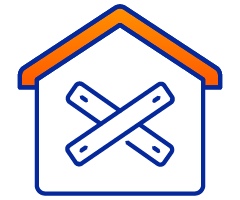
Board-Up
Our Network of Board Up Specialist Will Secure your property fast
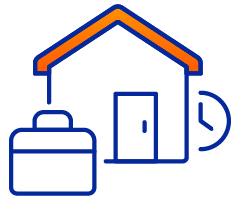
Temp Housing
We'll Help You Find Safe Shelter while you recover
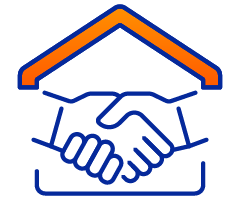
Public Adjusters
Our Network of Fire Damage Adjusters Will Fight Help for a fair insurance payout
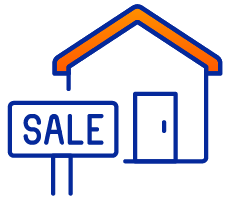
Investors
Our Partner Specializes in Buying Fire Damaged Homes So you Can Sell your home as-is

Content Cleaning
Restore what matters most
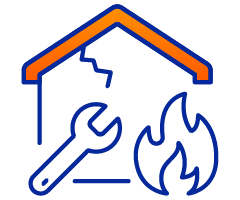
Restoration
Bring your home back to life
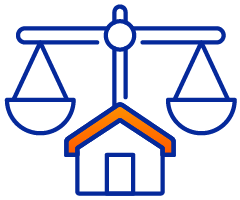
Attorneys
We have a network of Protect your rights and claims

Mental Health
Support for you and your family
Want To See If We Can Help You
If you'd like to speak with us today about purchasing Social Security, Personal Injury, Workers' Compensation or Employment Law Leads.
Homepage Bottom Form
We will get back to you as soon as possible.
Please try again later.